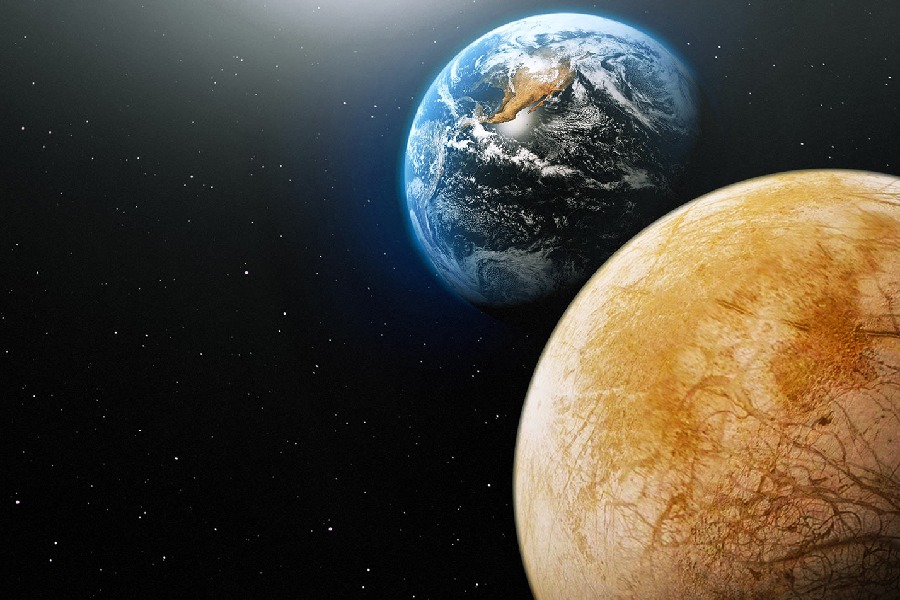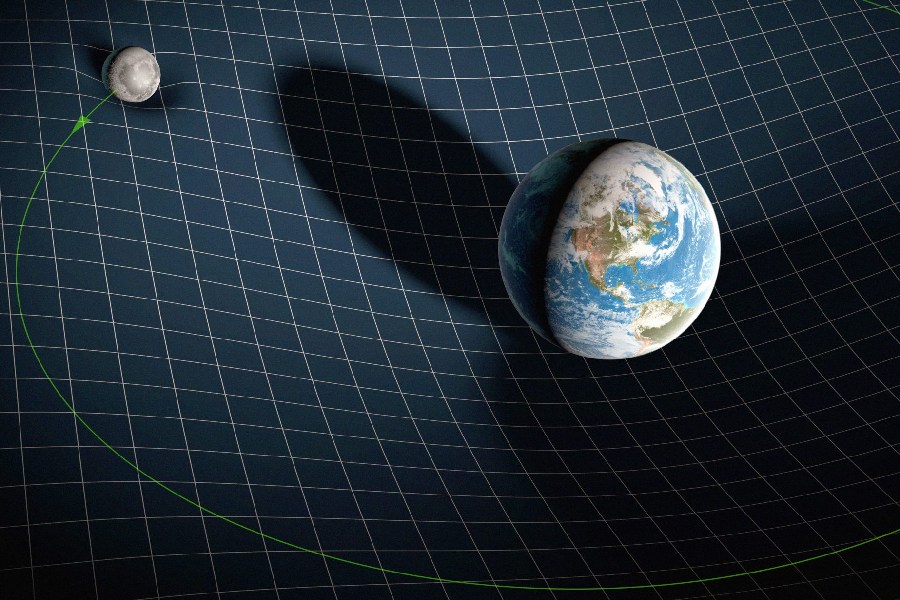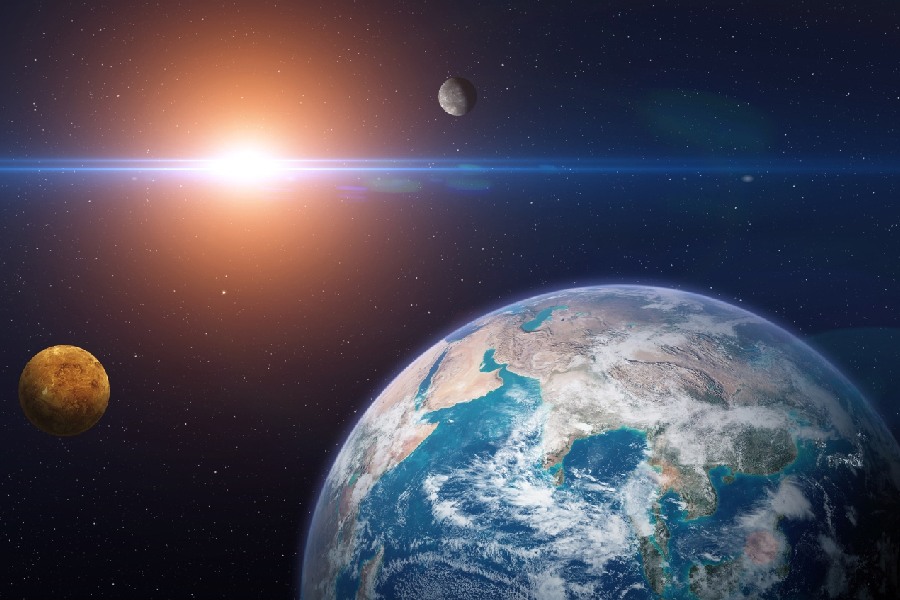When you look at Jupiter through a telescope, you may be drawn to the enigmatic pinpoints of lights that represent Jupiter’s moons. One of Jupiter’s frozen moons, Europa, has a subsurface ocean that may host microbial life. Europa is certainly a world that captures our imagination.
But have you ever pondered exactly how far away this intriguing icy moon lies from our home planet? In our solar system, distances between celestial bodies are massive, spanning millions or even billions of miles. So, what is the vast interstellar distance separating Earth and oceanic Europa?
Understanding this vast separation of how far is Europa from Earth puts our ambitions into perspective. Astronomers aim to explore Europa via bold future missions like NASA’s Europa Clipper. Join us as we quantify the distance between our home planet and this Jovian moon that harbors potential habitats in its hidden depths.
We will break down Europa’s location in the outer Solar System, employing astronomy numbers, facts, and comparisons. These showcase just how many miles removed icy Europa’s alien oceans are from the nearest human civilization.

How Far Is Europa From Earth?
How far is Europa from Earth? Europa, a moon of Jupiter, is approximately 390 million miles (630 million kilometers) from Earth.
Despite its distance, scientists have been able to study Europa using telescopes and space probes. They have used them to learn more about its fascinating features. These features include Europa’s icy surface and potential for hosting liquid water beneath.
Distance Measurement Between Europa and Earth
Gauging the distance between Earth and Europa is tricky. Earth orbits the Sun while Europa constantly zips around Jupiter, making the gap fluctuate between 365 million miles (at closest approach) and a whopping 588 million miles. Scientists use fancy tools like radar to track this moving target.
Knowing the exact distance is key for missions like NASA’s Europa Clipper because it helps plan trajectories, estimate travel times, and figure out how to talk to the probe across the vast gulf (33-53 minute signal delay!).
We even use a special unit, the Astronomical Unit (distance between Earth and Sun), with Europa ranging from 3.9 to 6.3 AU away.
Relative distance in the Solar System
Earth’s Moon is its nearest cosmic companion at about 240,000 miles average distance. While Venus orbits closer to the Sun than Earth but still comes within 25 million miles at closest approach, Mars has a wider orbit, coming around 34 million miles from Earth.
The asteroid belt lies between Mars and Jupiter orbits. In it lies Ceres, the largest asteroid, orbiting some 261 million miles from the Sun. The Jovian moon Europa orbits Jupiter at about 485 million miles from our star.
Icy bodies beyond Jupiter have even more extreme separations from Earth. Saturn is over twice as far as Jupiter at an average 945 million mile distance. Icy dwarf planets Eris and Pluto orbit the Sun out past Neptune, over three billion miles out from Earth.
Calculating exact separation
Parallax, a trick used for stars, isn’t suitable for close neighbors like Europa. Instead, scientists ping Europa with radar beams. They measure how long it takes the signal to bounce back, then multiply it by the speed of light to get the distance.
Giant dish antennas focus the signal, and precise timers track the round-trip time. With corrections for equipment, this method gets us within tens of kilometers of Europa, even though it’s constantly on the move around Jupiter.
Leveraging laws of physics
Newton’s laws of motion and universal gravitation provide a framework for understanding how gravity governs the orbital motion of celestial bodies. By measuring the period and other characteristics of Europa’s orbit around Jupiter, astronomers can set constraints based on fundamental physics principles.
These constraints, along with other factors, allow scientists to calculate the distance between Europa and Earth. Kepler’s laws of planetary motion help define the mathematical relationships between the size of an orbit, the speed of the orbiting body, and the mass of the object it is orbiting.
These laws enable astronomers to make precise calculations about the distances and motions of celestial bodies. By combining multiple data points gathered from Earth-based and space-based telescopes, scientists can further improve the precision of their distance measurements.
Astronomy and physics to measure distance
Parallax and trigonometry
The parallax technique uses an isosceles triangle and angle measurements to compute distances via trigonometry. Accurate angular readings rely on astronomy observations using telescopes fitted for precision.
Top space telescopes enable reliable stellar parallax measurement, but Europa is too close for this approach. However, the concept illustrates how trigonometry can define cosmic yardsticks.
Light echo and speed of light
Radar astronomy uses a light echo trick. Astronomers ping Europa with a signal and measure how long it takes to return. The constant speed of light lets them calculate the distance by multiplying the travel time by two.
With adjustments for equipment delays, this method provides accurate distance measurements for objects within our Solar System.
Orbital mechanics and gravitational forces
Newton’s laws and Kepler’s orbital principles help astronomers predict how Europa should move based on Jupiter’s gravity. By comparing these predictions with real observations from Earth and space telescopes, they can refine the calculations, pinpointing Europa’s distance with increasing accuracy.

Gravity, Time, and Speed
Jupiter’s powerful gravity dictates Europa’s orbital path. By measuring Jupiter’s mass and gravitational pull, scientists can calculate a theoretical orbit for Europa. Comparing this with Europa’s actual path and orbital period allows for refinement. Radio observations help establish precise orbital parameters.
However, Jupiter’s immense gravity doesn’t completely lock Europa’s orbit. The Sun’s influence also plays a role. Scientists use radar to ping Europa’s icy surface. By measuring the precise round-trip time of the signal (traveling at the constant speed of light), they can calculate the distance to Europa.
Powerful transmitters on Earth send strong radio bursts towards Jupiter. Large dish antennas then capture the tiny fraction that bounces back from Europa, revealing its exact location.
Additionally, tracking Europa over time allows scientists to plot its average orbital speed and derive its distance based on the influence of Jupiter’s gravity. Finally, comparing the expected velocity with the actual speed measured from Earth-based and space telescopes like Hubble helps refine the overall calculations.
These long-term observations also capture small deviations caused by the gravitational tugs of other moons orbiting Jupiter.
Effects of tidal forces
Jupiter’s gravity stretches and squeezes Europa due to tidal forces. This constant pull slightly elongates Europa as it orbits, nudging its path and making a perfect ellipse an imperfect reality.
These tidal interactions also heat Europa’s interior through friction, potentially influencing its structure and adding another layer of complexity to distance calculations.
Scientists rely on long-term observations and statistical averaging to account for these tidal effects and establish a more accurate baseline distance between Earth and Europa.
Space tech for distance measurement
The Galileo spacecraft orbited Jupiter and released the first probe studying Europa up close during the 1990s and 2000s. This established details on Europa’s orbit for distance calculations.
The Hubble Space Telescope utilizes its Fine Guidance Sensors to ascertain positions down to extreme precision. Hubble does this in visible and infrared scans of Jupiter and its moons.
Earth-based radar is a valuable technique for studying Europa from afar. Large dish antennas emit signals and map terrains when a faint reflection bounces back days or weeks later. By timing the delay, distances can be accurately derived.
Radar telescopes map Europa’s surface with radio signals, measuring the round-trip time for distance. Laser pulses offer a future option for even more precise measurements in space, like how they measure Earth-Moon distance with incredible accuracy. But for now, radar remains the key for Europa.
Current understanding of distance
According to NASA and other space agencies, the average distance spanning between Earth and Jupiter’s moon Europa is around 390 million miles. This is based on up-to-date astronomical measurements. It is also based on orbital models.
This positions Europa within the outer Solar System, orbiting Jupiter every three and a half days. Ongoing studies continue to refine distance calculations using advanced technology.
Radar mapping by facilities such as Arecibo gives precise numbers for comparison and averaging. Range finding by probes near Jupiter also gives precise numbers. Navigators for the upcoming Europa Clipper and JUICE missions require a highly accurate understanding of orbit positioning relative to Earth.
While the average distance is well-quantified, the exact Earth-Europa separation at any given moment has variability. Factors like tidal forces and Solar System dynamics cause small fluctuations.
New Horizons missions are outfitted with sophisticated laser-ranging gear. This gear offers prospects for astonishing precision in future separation calculations.

Conclusion
While the exact distance between Earth and Europa fluctuates due to their orbital paths, this article has provided a clearer picture, outlining the challenges and techniques used for these measurements.
We’ve seen how powerful radar telescopes bounce signals off Europa’s icy surface to determine the distance and how future advancements in laser technology might offer even greater precision.
So, how far is Europa from Earth? The answer depends on the orbital mechanics of these celestial bodies. On average, they’re separated by a whopping 390 million miles. But with continued exploration and innovation, we’ll gain an even deeper understanding of Europa’s ever-changing distance and the secrets it holds.
